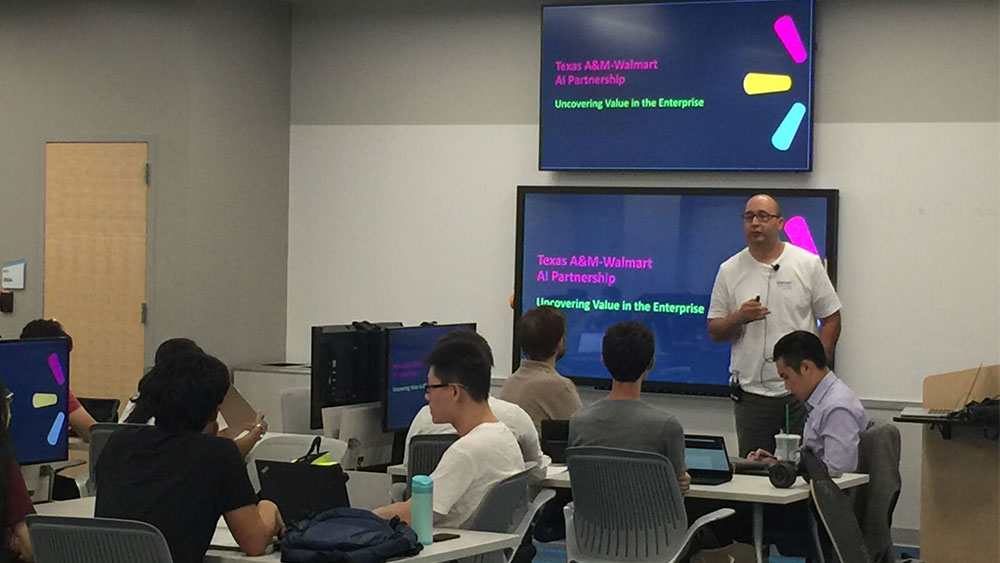
In association with their new technology development hub in Dallas, Walmart is sponsoring an artificial intelligence course at Texas A&M University. The course is being taught by Dr. Zhangyang “Atlas” Wang, assistant professor in the Department of Computer Science and Engineering.
The partnership will create a hands-on competition for students enrolled in the course. Grouped into teams, the students will develop cutting-edge computer vision algorithms to identify and track customers using Walmart’s surveillance camera system.
“It has been about a year since Walmart Technology opened offices in Texas. We identified early on that partnering with premier universities in the state would be a primary goal,” said Carlos Riojas, Walmart senior director of software engineering and artificial intelligence.
The world of technology is evolving and expanding to new horizons. From breakthroughs in cybersecurity to cutting-edge facial recognition, the synergy between researchers and industry helps produce technology that uses real-world data to solve existing problems.
Creating a way for a computer to not only identify a person, but track them across multiple camera feeds is difficult. A moving person is hard to predict and their movements are often free form compared to a programmable path. However, being able to identify and track the same person from camera to camera will give enterprises the ability to better understand their consumers and cater to their needs.
Through this, Walmart will be able to analyze customer behavior and how they move through the store to help optimize the shopping experience and product placement. It will also serve as a valuable tool in terms of safety, as they will be able to locate and track those who might pose a threat to shoppers.
“I think as computer science researchers, we always like to see our research generate a real-world impact. We are excited to see our algorithms work on something on a Walmart-sized scale,” said Wang. “Computer vision and machine learning can be very theoretical and mathematical, but they can also be useful in our daily lives.”
By sponsoring the course and providing awards for the winning teams, such as graphics processing units and research and development internship opportunities to students, Walmart is helping to build the computer science leaders of the future.
“Our partnership with Texas A&M is a signal that Walmart values the quality of students and research in the Department of Computer Science and Engineering, and we would like them to be part of our next generation of retail solutions,” Riojas said. “We look forward to innovating together in specialties like artificial intelligence and the ‘internet of things.’”